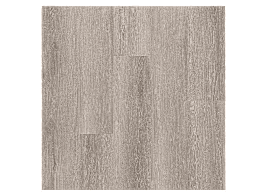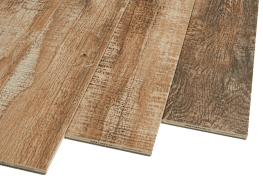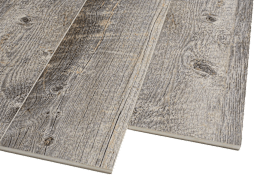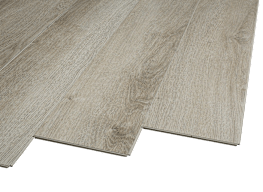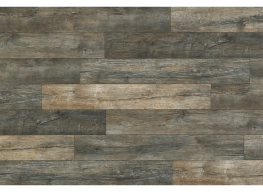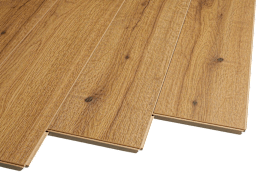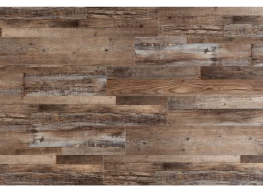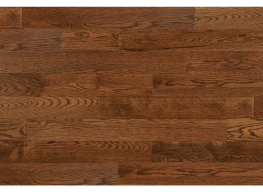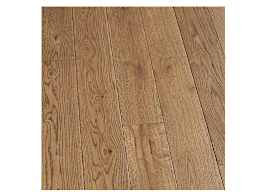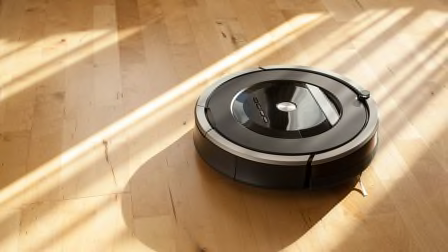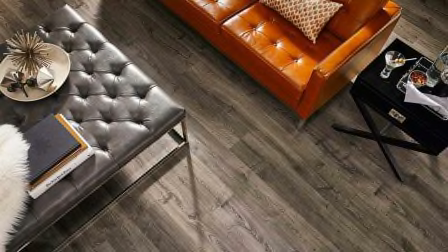How to Select the Best Flooring for Every Room in Your Home
Kitchens and bathrooms need different flooring from your family room. Let CR guide you through the options.
When it comes to home flooring, don’t feel you have to play by the rules. The best flooring for your home is no longer confined to wooden planks (ideal for living spaces where you want the look and feel of warmth underfoot) and porcelain tiles (good for moisture-prone bathrooms and laundry rooms).
New design and technology developments have led to changes in flooring types you may have avoided in the past. That opens up room for more choices and creativity.
Looking for the best flooring options? Check out the top picks from our latest tests.
Best Flooring for Kitchens and Mudrooms
The Challenge
High-traffic areas like kitchens and mudrooms require the hardest-working floors in your home. After all, grit-covered shoes grind in dirt, raincoats drip, chairs get dragged back and forth, and heavy cans crash from the kitchen countertop to the floor.
Though wood remains a widely used aesthetic choice, it won’t stand up well to that assault. Our tests show that in general, wood floors are far more prone to denting than other materials, and with very few exceptions, foot traffic is tough on the finish.

Photos: iStock, GAP Interiors Photos: iStock, GAP Interiors
Top Choice: Porcelain Tile
A natural fit for high-traffic areas of the home, porcelain tile outperforms every other flooring material we test for resistance to scratching, and it resists dents from light objects like falling utensils very well, says Larry Ciufo, the CR engineer responsible for rating flooring.
Porcelain tile comes in a range of styles to fit any décor. You can get small-format hex tiles for a traditional early-20th-century house, for example, or 4-foot faux reclaimed-ash planks that, when laid tightly together with a matching grout, will convincingly create the look of wood. Tile is also low-maintenance, requiring nothing more than vacuuming and mopping to stay clean.
Ciufo has one cautionary note about porcelain tile: It’s vulnerable to heavy objects that fall on it. “It’s probably the best choice for kitchens and mudrooms, but one has to be aware that it may crack when something heavy, like a full can of vegetables, is dropped on it,” he says.
Runner-Up: Vinyl Flooring
Sheet vinyl floors became popular with homeowners in the 1950s (sometimes with layer upon layer put down as tastes changed) for several good reasons. First, vinyl flooring is an affordable way to cover an expansive space. Of the vinyl flooring we test, vinyl planks and tiles come in at around $3.42 per square foot, on average, cheaper per square foot than porcelain tile and second in affordability only to laminates, at $2.82 per square foot. Vinyl planks and tiles are also among the easiest types of flooring to install yourself.
“Customers constantly mistake the luxury vinyl planks on my showroom floor for real wood,” says Joan Slaughterbeck, founder of Slaughterbeck Floors in Campbell, Calif., who has installed luxury vinyl planks throughout entire homes in Palo Alto and other upscale Bay Area communities.
Today’s vinyl products are also more durable than those of the past, but some may be prone to scratching. Therefore, keep felt bumpers on the feet of kitchen stools to protect vinyl flooring, and buy an extra bundle of planks now to ensure that you have a perfect match down the road. If any planks get damaged, you can remove them and install replacements as needed.
Best Flooring for Bathrooms & Laundry Rooms
The Challenge
These floors don’t face the stress of heavy foot traffic or the constant sunlight that plagues other spaces. Rather, the flooring threats in these rooms come in liquid form. Bathers splash, showerers drip, and toilets overflow. And that’s not all: “Let’s just say a lot of guys think their aim is better than it really is,” says Mark Mackmiller, a design and build contractor in Eden Prairie, Minn. Urine can stain and even etch into some natural stone flooring, particularly marble, and bleach mars the finish of some flooring in our tests, particularly wood and laminate.
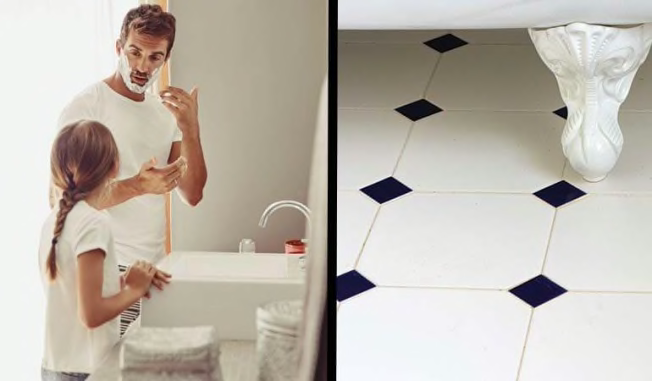
Photos: iStock Photos: iStock
Top Choice: Porcelain Tile Flooring
Even purists who refuse anything but real wood should seriously consider porcelain tile for their bathrooms and laundry room. Tile holds up well in wet places, says John Cole, an architect in Fryeburg, Maine. Porcelain also allows for design-forward, barrier-free showers, where the bathroom floor extends straight into the shower without any curb. To avoid slippery-when-wet floors, choose a more textured product rather than one with a highly polished surface.
Runner-Up: Vinyl Flooring
Once again, for a less expensive (though less durable) type of flooring that’s an alternative to porcelain tile, turn to vinyl, which costs 26 cents per square foot less than tile, based on the materials we test.
All the vinyl tiles and planks we test boast top-notch resistance to water spills and flooding. Luxury vinyl tiles, which tend to imitate stone, and luxury vinyl planks, which mimic wood, will deliver the most realistic look. They can even be laid in the pattern of your choice, just like the real thing.
Best Flooring for Dining, Living, and Family Rooms
The Challenge
Though it’s true that furniture, pet nails, stiletto heels, and toys with wheels can damage a wood floor, any other material can feel substandard in these cozy common areas. “There’s a reason real estate ads mention wood floors,” Slaughterbeck says. “Hardwood also adds value to your home.”

Photos: iStock, Consumer Reports Photos: iStock, Consumer Reports
Top Choice: Solid Wood Flooring
By this, we mean prefinished wood flooring, such as the nine products we test (four of which score average or better) as well as unfinished wood flooring, which gets sanded and finished on site. (CR doesn’t test unfinished floors because much of what we analyze is related to the finish.)
There are plenty of reasons to opt for prefinished planks. You won’t have dust from sanding or fumes from finishing to contend with during installation, and depending on how it’s installed, you might be able to walk on the floors right away. Prefinished flooring also tends to be less expensive. Perhaps most important, the factory-applied finishes are significantly tougher-wearing than what your contractor would likely apply once the floor is installed.
Runner-Up: Engineered Wood Flooring
Though it resembles the look of solid wood, engineered wood flooring has just a thin veneer of finished wood, such as oak or maple, attached to a plywood-like substrate. Engineered wood provides several significant advantages over solid wood. The varieties we test cost $4.52 per square foot, on average; prefinished solid wood in our tests averages $5.47 per square foot. And with an engineered product, you may be able to afford an exotic wood species, such as Brazilian walnut or tigerwood, both of which tend to be more scratch- and dent-resistant than oak or maple.
Engineered wood floors are also less susceptible to seasonal shrinking and swelling because the underlying support structure is designed to be more stable than solid wood. You can even install some directly over a concrete subfloor, which isn’t always possible with solid wood. In fact, engineered flooring is often low-profile enough to install over an existing floor, representing huge potential savings. Still, this choice lacks the longevity of solid wood, particularly for the long haul. In certain household environments, a wood floor might need refinishing every decade or two. Some engineered products can be refinished just once (depending on the thickness of the top “wear” layer), whereas solid wood can be refinished four or five times.
Best Flooring for Enclosed Porches and Sunrooms
The Challenge
Depending on how exposed your porch is, the floor might be exposed to intense sunlight and rain. And you might have to contend with a concrete subfloor (which limits your options because you can’t nail planks directly to it), recreational equipment storage, and even freeze-thaw cycles if the floor is installed in a three-season room.
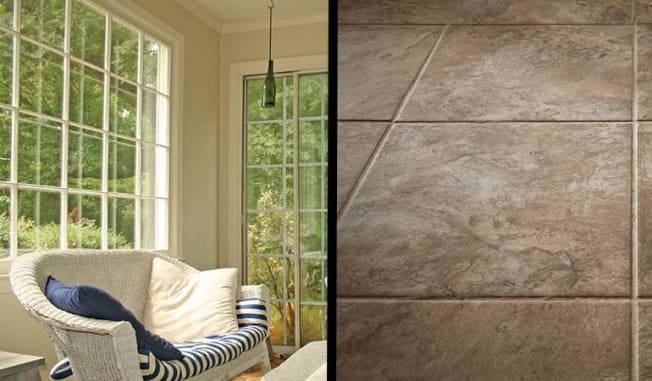
Photos: iStock, Courtesy of Style Selections Photos: iStock, Courtesy of Style Selections
Top Choice: Porcelain Tile Flooring
This durable material will stand up to most of the abuse it gets in these rooms. In addition to faux wood and stone, porcelain tiles can be designed to look like handmade ceramic tiles, a welcoming choice for these casual hangouts. If your porch isn’t fully heated and protected from the elements, make sure to choose a tile that’s rated for outdoor use in your climate.
Runner-Up: Engineered Wood and Vinyl Flooring
If you’d rather pass on cold-to-the-touch tile—and your porch is weatherproofed and heated—engineered wood offers a warm, this-room-is-not-an-afterthought look. Engineered wood flooring can also usually be installed over a concrete subfloor. But for a porch that’s exposed to weather, you’d do better with an exterior decking product, such as a tropical hardwood, composite, cedar, or pressure-treated pine.
Be sure to look at the manufacturer’s installation specifications before buying an engineered wood for such a space, Ciufo says. “They may suggest adding a vapor barrier or some kind of underlayment when installing over a concrete floor,” he says.
“Vinyl, especially plank styles that mimic wood, can provide an attractive alternative,” Ciufo adds. In our tests, vinyl does well with moisture and with ultraviolet rays like those in sunlight.
Best Flooring for Basements
The Challenge
It doesn’t matter whether you’re refinishing this subterranean space as a rec room, a playroom, an in-law suite, a wine cellar, or a man cave: The biggest threat to a basement floor isn’t from above, it’s from below. A concrete floor—especially one that’s below grade—might be damp constantly. And if the area floods, any porous material can absorb the water, expand, and buckle, Mackmiller says.
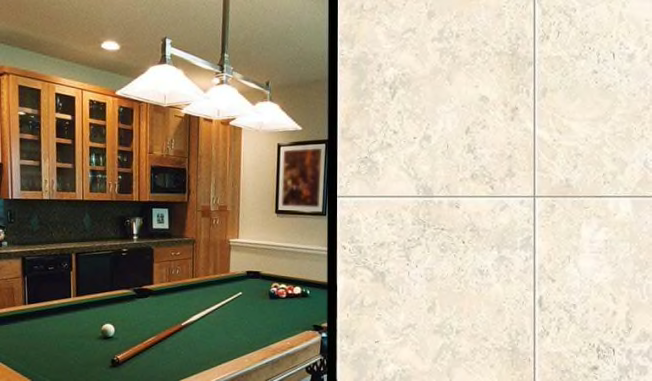
Photos: iStock Photos: iStock
First things first: Make sure to choose a flooring that’s rated for installation over below-grade concrete. And read the manufacturer’s instructions carefully, Mackmiller says. In a basement, the surface needs to be installed as a “floating floor”—that is, one that attaches only to itself and not to the subfloor below. This way the entire surface can shift as moisture and temperature levels change without pieces of the flooring buckling or coming loose.
Top Choice: Vinyl Flooring
Every vinyl product we test handles water-submergence with the best possible results, so all are completely waterproof. “That makes vinyl the best choice for basements that can be subject to persistent moisture, ranging from dampness wicking through the subfloor to pooling from storms or plumbing failures,” Ciufo says.
Both vinyl and porcelain, which don’t contain wood fibers, stand up to the worst of these conditions. But porcelain tile tends to feel uncomfortably cold underfoot, especially in basements where the chilly ground underneath makes heating it with an electric floor-warming system extremely inefficient (not to mention expensive). That makes vinyl the clear winner when it comes to basements. It also offers a wide range of formal and informal looks to fit whatever vibe you’re creating.
Runner-Up: Laminate Flooring
Laminate, which is dense fiberboard topped with an image sealed under clear plastic, is another affordable choice. (Of the flooring we test, it’s the least expensive, costing 60 cents less per square foot than vinyl, on average. Our top-rated vinyl model, Armstrong’s Vivero D10 Homespun Harmony flooring, comes in at $4 per square foot.) It’s also easy to install yourself. Use it in basements that have no leaks or persistent moisture on the walls or floor. For the most convincing look of real wood, choose a product with wide planks that simulate individual floorboards. Placing the flooring over sound-dampening foam underlayment will reduce the hollow sound it can make underfoot.
















